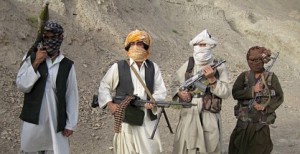The Taliban haven’t heard that the fighting season ended in November. Less an insurgent force and more a conventional army fighting above ground, they continue to press their offensive in the southwestern province of Helmand and have taken key districts. Helmand may fall, imperiling the government’s position in adjacent Kandahar province.
The Afghan National Army is tired, stretched thin, and plagued by desertion. Washington is concerned. It has already decided against further reductions in US personnel. It may be considering troop increases to counter the Taliban’s massed forces. The British have already boosted their training mission in Helmand. There are options.
Retrenchment in the north
The Taliban are chiefly a Pashtun movement based in the south. There is a Pashtun presence in the northern province of Kunduz and the Taliban have exploited it. However, the north is home to Tajik, Uzbek, Hazara, and Turkmen peoples who adamantly oppose the Taliban. They formed the Northern Alliance, fought the Taliban for years, and were instrumental in ousting them with US help after 9/11.
The ANA could withdraw from the South, or large portions of it, and continue the fight from defensible positions in the north. This naturally will be unpalatable to the government and many loyal southern tribes such as the Shinwari and Wardaks. However, there are harsh military realities. (I advanced this option long ago in “Plan B for Afghanistan” Asia Times, 29 July 2010,)
Iran
The Northern Alliance continued to fight the Taliban on the nineties long after the US walked away from Afghanistan. When US special forces made contact with the Northern Alliance in 2001 they learned that Iranian special forces had been there for years. There was limited cooperation between the US and Iran in ousting the Taliban and Iran continues to help with development projects.
Tehran sees the Taliban as a virulent Sunni cult backed indirectly by Saudi Arabia. Taliban ascendancy will mean renewed persecution of the Shia of Iran and one day, another Sunni base area near Iranian territory.
Iran may intervene in Afghanistan, with or without consulting the US. Tehran likely has contingency plans to deploy Revolutionary Guar troops into neighboring Afghanistan. There is a major IRGC base near Zahedan, only a few miles from the Afghan border and fifty miles from embattled Helmand province. A few hundred IRGC troops could shore up Helmand, perhaps with the help of Iranian airpower.
Alternately, or in conjunction with IRGC troops, Iran could bring in Shia militias from Iraq, many of whose members are Shia Afghans (Hazaras) recruited and trained by the IRGC tonight ISIL.
Unfortunately, cooperation with the US here is unlikely.
US troops, again
American special forces units, say, a battalion of 500 troops, could also shore up ANA positions in the south. Just as Tehran likely has contingency plans for introducing troops, so likely does Washington. Indeed, reports indicate that training missions have shifted to regular ground combat – in Helmand.
Key to Taliban success has been their ability to mass troops before attacking government positions. The discipline, cohesion, and firepower of a ranger battalion would inflict high casualties on Taliban assault forces. Add in airpower with smooth ground-to-air communication, and Taliban losses might well be egregious.
Unable to mass troops, the Taliban will of course revert to insurgent tactics. However, they will no longer be threats to district capitals and sizable outposts, their offensive will be thwarted, and stalemate will return.
Negotiated autonomy
Another option is to open a dialog with the Taliban, perhaps through Qatari intermediaries. The Taliban would receive autonomy in large portions of the south and perhaps an enclave in Kunduz. Kabul gets the rest of the country – and a ceasefire. The Taliban will also get money for reconstruction and perhaps even help in fighting ISIL enclaves.
This is not as embarrassing a move as it might appear. The Taliban have already conquered large portions of the south and installed their own government there – a rule that while harsh is often considered less corrupt than Kabul’s. As has been noted, a country losing an insurgency isn’t being outfought, it’s being outgoverned.
©2015 Brian M Downing
